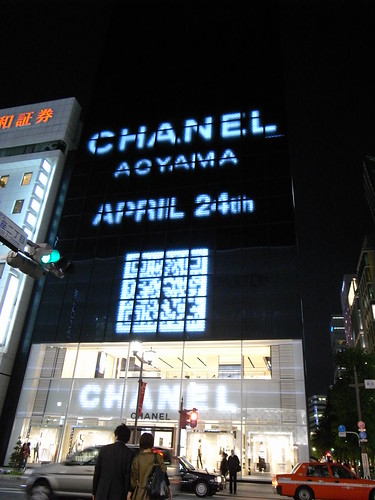Exterior and interior signage have changed throughout the years. New technology allows them to be produced more quickly and in different shapes and sizes. New materials allow signage to be created heavier or lighter than before to help them better adhere to their location, and some signs are even made from eco-friendly materials.
Signage can now also contain lighting or be created in a digital fashion instead of traditional print. Many companies are using digital signage because it allows them to constantly change out the message without needing to recreate it.
But just because digital signage is new does not mean that it’s better than traditional signage methods. In fact, there are a few disadvantages to using digital signage.

Image by na0905 / Flickr
They’re expensive.
The use of digital signage is more costly than traditional methods. This is because digital signage requires technology and not standard printing like traditional methods. In order to create a digital sign, you will need to purchase a screen, the software used to generate the content, the technology needed to hook it up and the staff needed to manage the campaign. Plus, digital signage needs a certain level of protection to keep it safe from harsh weather conditions, which is another added expense.
They’re still new.
Digital signs are still the new kid on the block, which means that they will still have kinks that need to be addressed. It’s also likely that as technology evolves, newer digital technologies will be created that will be better and cheaper than the previous technology. Before long, this “new” technology that you spent a fortune on will no longer be as cool or functional as the models created in the future.
They require experience.
Though some digital signage platforms are easier to use than others, it still requires knowledge of the software or technologies needed in order to make the signage work. Even if the software is easy to use, it will require a good amount of use before you have a true handle on how the technology is used. You may end up putting the wrong content in, sending it to the wrong place or making it go live at the wrong time, which can be damaging to your marketing efforts.
They’re harder to replace.
If your traditional sign were to tear, all you would need to do is have another sign printed and adhered, which though frustrating, is a pretty simple task. When your digital signage breaks, it requires more work to fix. There’s technology and electrical involved, which may mean that you need to have multiple professionals come out and fix it. If the damage was severe, you could be without your signage for an extended period of time until it does become fixed, which leaves you with an expensive repair and without a marketing campaign.
They’re chosen without much thought.
Some people make the mistake of investing in digital signage simply because it’s new, but they don’t have a clear purpose as to why they’re marketing this way or the goal of the marketing effort. When you have a marketing tactic without a purpose in mind, it will not be much help to your business.
Though digital signage can be a fun new addition to your marketing strategy, you need to determine if it’s really as valuable as you think it is. It’s possible that you’re just attracted to the fact that it’s something new, and before you make a rash decision, you need to make sure you weigh both the pros and cons.
About the Author: M.P Brown is an avid reader always on the lookout for information that will help him undestand marketing and advertising trends. M.P helps to add insight to the designers creating signs from Icon ID.
